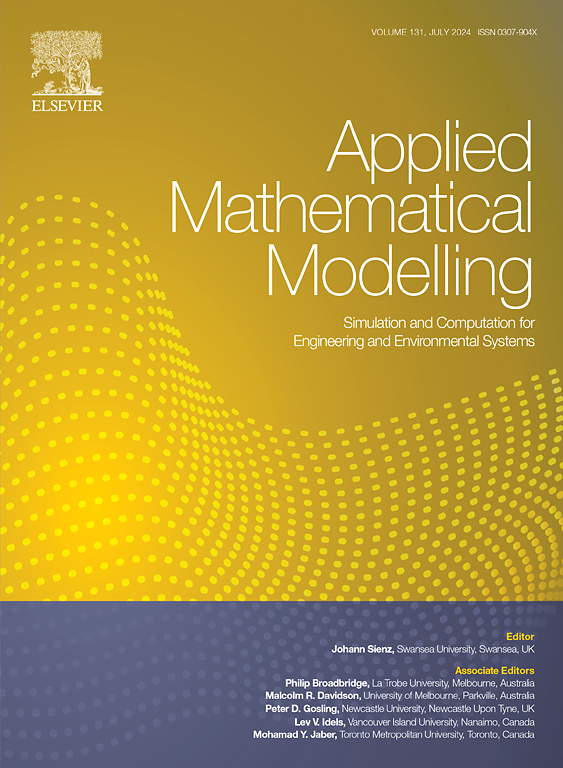具有累积时滞效应的灰色关联模型及其应用
IF 4.4
2区 工程技术
Q1 ENGINEERING, MULTIDISCIPLINARY
引用次数: 0
摘要
为了更准确地识别序列之间的时延关系,我们提出了时延系统的灰色发生率模型。在构建新模型之前,我们首先阐明了几种时延关系,包括瞬时形式和累积形式。随后,我们初步使用 Weibull 分布来表示多种类型的时延效应。为了减少计算量,我们设计了最小累积步长,以简化卷积,并在研究中用于汇总累积时延效应。这有助于我们利用相对角度和距离提取差异信息。为了简化获取结果的过程,我们利用粒子群优化来优化 Weibull 分布的自适应参数,从而获得累积时延信息。通过数值实验验证了所提出的模型,分析了主要影响因素对空气污染的时延效应。最后,通过与十种主流模型的对比分析表明,我们的模型不仅集成了传统模型的功能,而且在连续时延检测方面具有显著优势。本文章由计算机程序翻译,如有差异,请以英文原文为准。
A grey incidence model with cumulative time-delay effects and its applications
To identify the time-delay relationship between sequences more accurately, we propose a grey incidence model for time-delay systems. Before constructing the new model, we first clarify several time-delay relationships, including instantaneous form and cumulative form. Subsequently, the Weibull distribution is initially used to represent multiple types of time-delay effects. To reduce the computational load, the minimum cumulative step size is designed to simplify convolution, which is used to aggregate cumulative time delay effects in our research. This facilitates us to extract discrepancy information using relative angles and distances. To streamline the process of obtaining results, we utilize particle swarm optimization to optimize the self-adaptive parameters of the Weibull distribution and obtain cumulative time-delay information. The proposed model is validated through numerical experiments to analyze the time-delay effects of key influencing factors on air pollution. Finally, a comparative analysis with ten prevailing models demonstrates that our model not only integrates the functionalities of traditional models but also exhibits significant advantages in the detection of continuous time delay.
求助全文
通过发布文献求助,成功后即可免费获取论文全文。
去求助
来源期刊

Applied Mathematical Modelling
数学-工程:综合
CiteScore
9.80
自引率
8.00%
发文量
508
审稿时长
43 days
期刊介绍:
Applied Mathematical Modelling focuses on research related to the mathematical modelling of engineering and environmental processes, manufacturing, and industrial systems. A significant emerging area of research activity involves multiphysics processes, and contributions in this area are particularly encouraged.
This influential publication covers a wide spectrum of subjects including heat transfer, fluid mechanics, CFD, and transport phenomena; solid mechanics and mechanics of metals; electromagnets and MHD; reliability modelling and system optimization; finite volume, finite element, and boundary element procedures; modelling of inventory, industrial, manufacturing and logistics systems for viable decision making; civil engineering systems and structures; mineral and energy resources; relevant software engineering issues associated with CAD and CAE; and materials and metallurgical engineering.
Applied Mathematical Modelling is primarily interested in papers developing increased insights into real-world problems through novel mathematical modelling, novel applications or a combination of these. Papers employing existing numerical techniques must demonstrate sufficient novelty in the solution of practical problems. Papers on fuzzy logic in decision-making or purely financial mathematics are normally not considered. Research on fractional differential equations, bifurcation, and numerical methods needs to include practical examples. Population dynamics must solve realistic scenarios. Papers in the area of logistics and business modelling should demonstrate meaningful managerial insight. Submissions with no real-world application will not be considered.
 求助内容:
求助内容: 应助结果提醒方式:
应助结果提醒方式:


